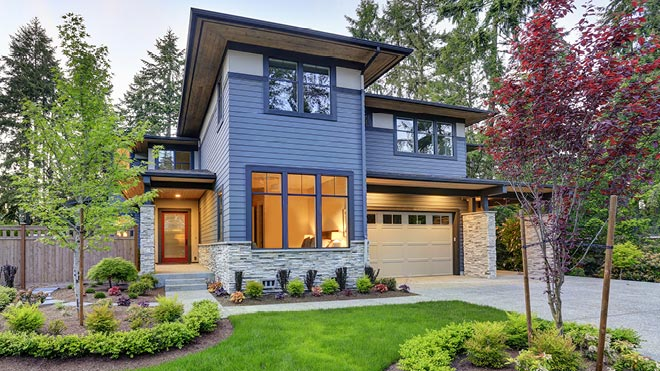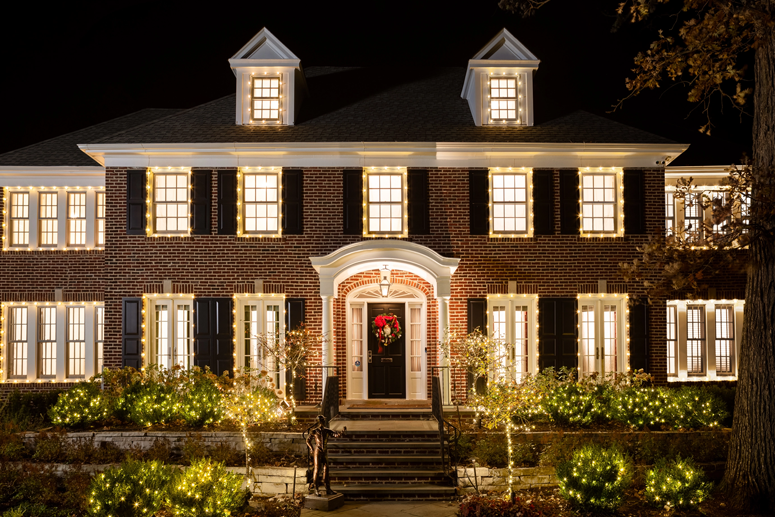When the worst happens, you want to know you’ve got one of the best, most reliable insurance companies around covering your home. There are a few important factors to consider when choosing a home insurance company—price, deductibles, add-ons—which can vary depending on your needs.
What everybody should note, regardless of what kind of plan they’re looking for, is how a company handles claims and what kind of coverage it offers.
Types of Home Insurance Policies

There are 8 types of home insurance policies in the US, numbered HO-1 through HO-8. The most common is HO-3, a “broad-form” policy that covers what’s known in the industry as the “16 perils.” Think of a peril as damage-causing act that your insurance policy will cover, for example a fire, break-in, or explosion (see Home Insurance Losses Forecast).
The 16 perils covers a broad spectrum of damages that range from natural causes (fire, hail, wind damage) to human-related (theft, vandalism), to equipment (a hot water system burning).
The other 7 plans differ in the number and type of perils they cover, or else apply to those with specific living conditions such as tenants, condo owners, or residents of a mobile home.
Buildings insurance
This covers you in the event of damage to the structure of your home, such as the walls, roof and floors. It usually covers damage to fixtures and fittings too. It’s not compulsory, but it’s usually a condition of your mortgage to have it. If you own your own home, with or without a mortgage, this insurance should be a top priority.
Contents insurance
This covers you for loss or damage to personal possessions in the event of fire, theft, flooding and similar incidents. It covers all your personal belongings – anything not physically attached to the building – against the cost of loss or damage (see Global Insurance Report).
Unlike buildings insurance, this is optional. But insuring your possessions is generally a sensible idea for both tenants and homeowners.
The Basic home insurance Plans

A basic home insurance plan covers 4 types of ‘damage’ or costs associated with the disaster:
- Dwelling coverage: covers damage or loss of the home itself
- Content coverage: covers damage or loss of personal belongings inside the home
- Personal liability: covers liabilities such as injuries to people inside the home
- Living expenses: covers costs of temporary living conditions if the home is uninhabitable
To sum it up: if a fire breaks out in your kitchen, a basic plan would likely cover the cost of rebuilding the walls, replacing the furniture, appliances, decor, etc, treating any people injured in the fire, and paying hotel costs if the house is temporarily unlivable.
The Add-Ons
It’s important to note what perils are and aren’t covered in your plan. Common perils such as lightning or fire are included in basic plans, while others, notably earthquake insurance, require an add-on policy (see Global Commercial P&C Insurance Sector). It’s best to consider the environment you live in and what common weather patterns exist there.
Then you can decide if it’s worth it to add. Here’s a list of some common add-ons.
- Earthquake: Not for everybody, of course, but it’s a critical factor for those that need it. Earthquakes are never covered by standard insurance policies. Some companies offer earthquake coverage as a stand-alone policy or as an add-on (California law, for example, requires it). But it’s not uncommon to have to buy a stand-alone policy from a partner of the insurance company or special provider. Assess whether earthquakes present a big enough risk for you; if so, companies that offer affordable and streamlined earthquake coverage could factor into your decision-making process.
- Flood: This is another peril not included in basic plans, so again, assess the degree of risk and need. Some insurance companies offer flood-and-earthquake bundles that are worth looking into if relevant.
- Replacement costs: Replacement costs refer to the way the company decides how much to reimburse you. The actual cash value (ACV) is standard and factors in the age and depreciation of your claim, meaning premiums might be less, but so will your reimbursement. You can upgrade to a replacement cost value option (RCV), which uses the market value to determine the value of your possessions. This way your claim will be replaced by a new or similar item regardless of its age.
- Water backup of sewer or sump pump malfunction: Plumbing malfunctions that lead to damage and floods are protected by this optional add-on, but it’s important to note that it doesn’t cover flooding itself, only incidents related to the plumbing system.
Do I have to buy home insurance and do I need both buildings and contents insurance?

Many people will need both buildings and contents insurance, but some will only need one type of cover (see about US Property & Casualty Insurance).
You may need both if:
- You’re a homeowner. You probably need both. While buildings insurance isn’t a legal requirement, it will usually be required by your mortgage lender. Even if you own outright (i.e. there is no mortgage) it’s still usually a good idea, as it covers repair or rebuilding costs in the event of damage – and those costs can be very high.
- You own the freehold to your property. It can be very expensive to repair any structural damage, so cover is highly advisable. If you own the freehold on a flat or maisonette you might be able to take out a single buildings policy with other owners.
- You’re a landlord. Your mortgage lender will likely require that you have buildings insurance in place, and it’s sensible to have contents insurance if you’re providing the furnishings in the property. One option is to take out landlord insurance, which protects your property as well as your rental income and covers your liabilities in the event of damage or injury suffered by your tenants.
You may not need both if:
- You’re a tenant. You’ll likely only need contents insurance. You don’t need to take out buildings insurance, as it will be your landlord’s responsibility to make sure the right cover is in place. But if you want your possessions to be insured, it’s up to you to take out contents insurance, not the owner/landlord. Find out more in our blog about I’m renting my home do I need insurance?
- You own a leasehold flat and don’t own part of the freehold. The building will likely be insured by whoever owns the freehold but you may have to pay a contribution to the cost of insurance through your service charge. If you do own part of the freehold with other leaseholders, you will jointly be responsible for taking out buildings insurance. Your solicitor will be able to advise you if your lease means you have to take out buildings insurance separately. Either way, you’ll need contents cover if you want your belongings to be protected.
If you do need both buildings and contents insurance, it’s usually cheapest to buy them together on a combined policy rather than taking out two separate ones.
Having one policy in place can also make it easier and quicker if you do need to claim on both your buildings and contents cover.
Choosing the Best Home Insurer

The claim is your request to the insurance company to reimburse you the costs of unexpected damages. It’s good to know if the company pays the full claim amount upfront, or doles it out in portions; whether your plan covers all items, or just those you’d replace; as well as the company’s general reputation for managing claims.
Price and deductible, the amount you pay upfront in an emergency before coverage kicks in, are also important factors, and it’s wise to check the financial stability of the company.
Finding the right home insurance policy depends on various factors specific to your situation, but remember to take the time you need to find the right insurance.
| Terms | What’s Covered? |
|---|---|
| Dwelling | The structure of the house |
| Separate Structures | Separate garage, gazebo, tool shed, etc. |
| Contents | Personal property (furniture, electronics, clothes, etc.) |
| Loss of Use | Additional costs of living away from home if you can’t live there due to covered damage |
| Liability | Lawsuit expenses and damages |
| Medical Payments | Medical coverage in the event that someone is hurt on your premises |
How to Save Money on Home Insurance?
Bundling deals are a good way of saving money on insurance. Depending on your provider, you may be able to bundle your home and auto plans.

Bundling can be cheaper, more convenient, and may make you less at risk of being dropped by a provider for high-risk factors, though it’s important to make sure the bundle offers you everything you’d need from each separate plan.
Preventative technology in your home can lower prices as well. Companies often offer special discounts for homes equipped with security systems, smoke detectors, deadbolts, and other measures that minimize hazards.
How to reduce the cost of home insurance?
- Increase security: some insurers will only insure you if you have BSI-approved locks on all outside doors and windows. Most insurers will help you work out which locks you already have. You might also get a reduction for joining your local Neighbourhood Watch scheme and installing security lighting.
- Install alarms: smoke and burglar alarms are both important. Make sure they’re approved models could earn you a discount on your premiums (although what you save in lower premiums is unlikely to cover the cost of the alarm).
- Increase the excess on your policy: if you’re happy to cover a bit more of the cost of a claim yourself, your premiums might be lowered.
- Build your no-claims discount: if you don’t claim for a few years you might get a discount, but not all companies offer this, so check before you buy.
- Buy buildings and contents insurance together: you might get a discount if you get both from the same company.
- Pay annually: monthly premiums can cost more. There’s usually an extra 6% charge to pay monthly. Though some insurers will allow payment by instalments for no extra charges so it’s worth shopping around.
- Take advantage of offers: some insurers guarantee to beat any quote (or the renewal of your current policy) by up to 10%, on a like-for-like basis.
- Check you don’t already have it: you may have some form of home insurance as part of a packaged current account. If you do already have enough cover in place there’s no need to pay for a separate policy.
Regulation Information and Underwriting
Like other forms of insurance, home insurance is regulated by state rather than federal law. Regulation can vary from state to state, so it’s important to be knowledgeable of your state’s regulation policies.
In general, the underwriting process for home insurance is similar to that of other insurance policies, though for a home, the risk-factors an underwriter might consider are location and relevant natural disaster risk, the type of structure, any history of past damage claims, and, in certain cases, the types of pets you own or any potentially dangerous amenities on your property, such as swimming pools, guns, or trampolines.
………………………..









